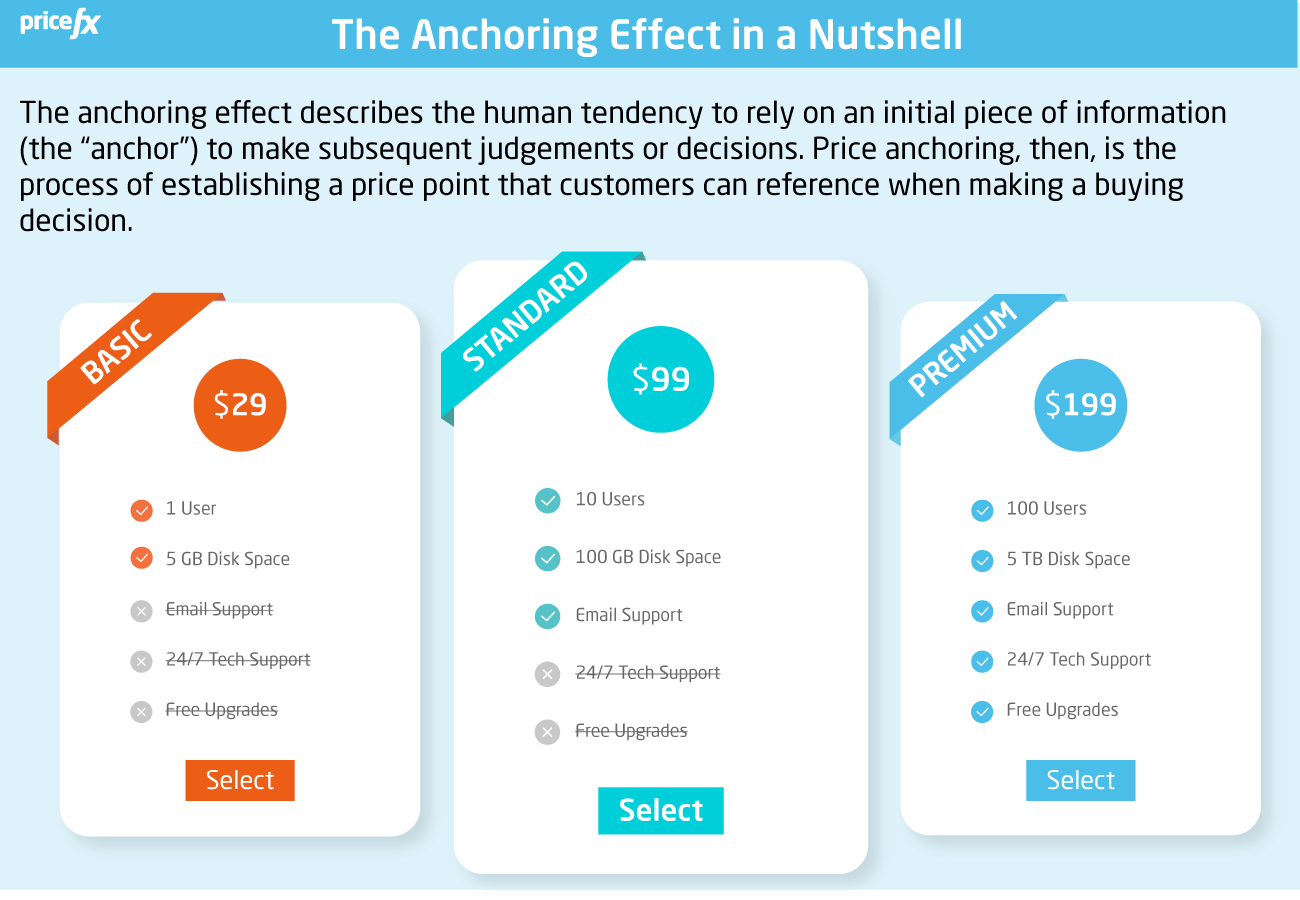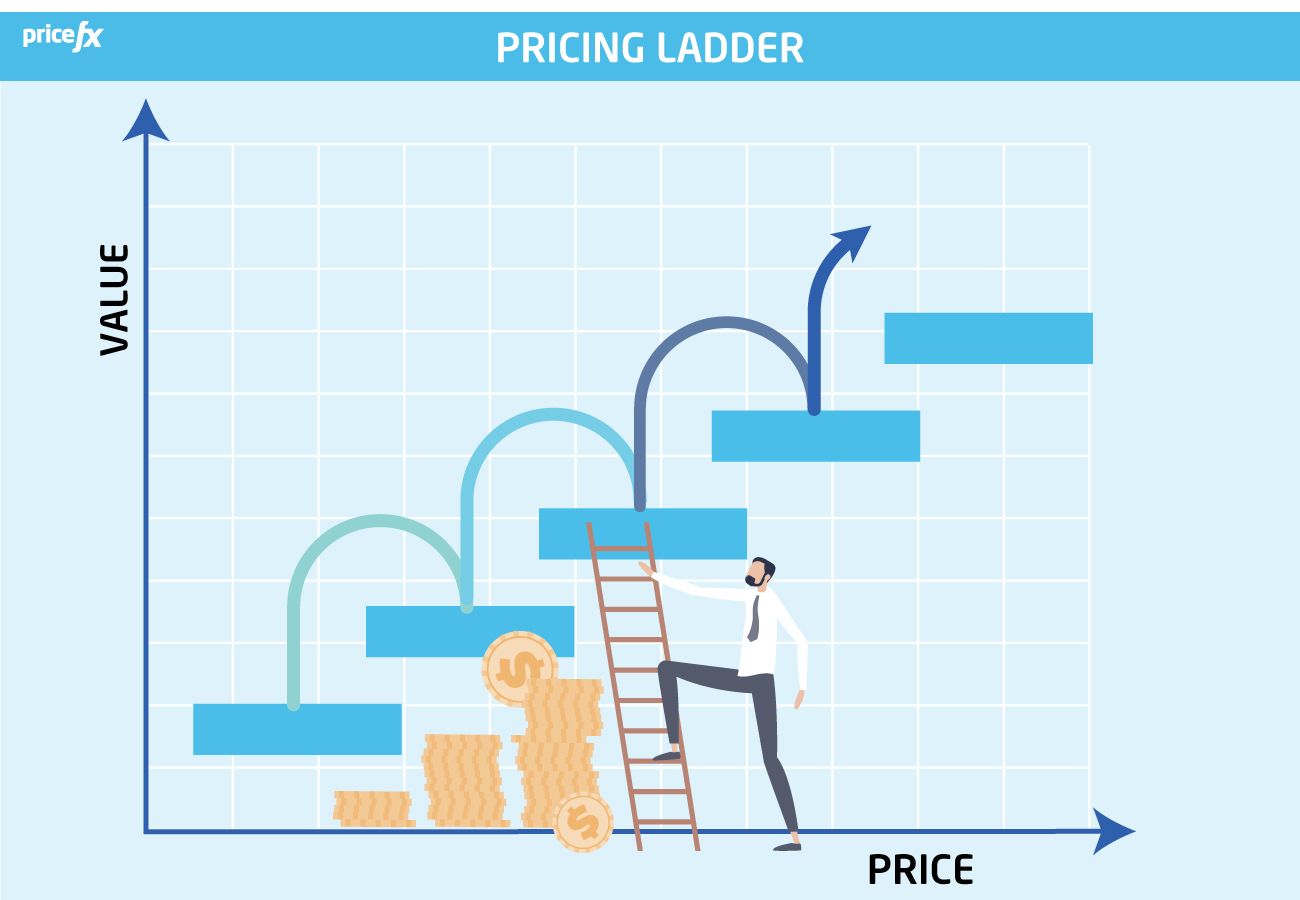Pricing Ladders in Retail – 5 Tips for Great Execution
April 27th, 2023 | 10 min. read
In the world of retail, pricing strategies can make or break a business. One effective pricing tactic that has gained popularity in recent years is the use of pricing ladders. But what does that mean exactly? By implementing pricing ladders in retail, businesses can entice customers to purchase higher-priced items while still offering budget-friendly options (and perhaps even a mid-priced option where your profit margins are maximized). However, executing a successful pricing ladder can be challenging. A common pain point that many retailers without pricing ladders face is losing customers to their competitors due to a lack of pricing options that cater to varying budgets and needs. Without pricing ladders, you may even be driving your customers towards your products that are not making your company the most money or are those products that are not optimized towards your goals and your organization’s unique set of desired business outcomes.
At Pricefx, we have more than 12 years of experience and ensuing expertise in helping retail businesses to optimize their pricing and increase sales, driving long-term success and growth. This is critical in today’s highly competitive retail landscape, where customers have a wide range of options to choose from. By effectively differentiating their products, retailers can stand out from competitors and tailor their pricing strategies to meet the unique needs and budgets of different customer segments while simultaneously achieving their required business outcomes.
In this article, we will define precisely what pricing ladders are, why your retail business may require pricing ladders and discuss strategies for the great execution of pricing ladders in retail.
What Are Pricing Ladders?
A pricing ladder is a pricing strategy that involves offering multiple versions of a product or service at different price points. Each version provides distinct levels of features and benefits, allowing customers to choose the option that best fits their needs and budget.
Taking that explanation one step further, the pricing ladders are in general, the alignment of price points based on a logical correlation between the product difference cues which you’re selling.
The goal of a pricing ladder is to entice your customers to purchase whichever product you would most like them to buy while still offering a choice of options that suit every budget.
The psychology of the pricing ladder is simple.

For example (this psychology is also known as price anchoring which will discuss in further detail in the sections below), a clothing retailer may offer three products;
- A basic t-shirt at a lower price point (with the mid-point profit margin)
- A premium t-shirt with additional features like moisture-wicking technology (with the greatest profit margin) at a higher price point, and;
- A luxury t-shirt made from premium materials at the highest price point (an excellent product but potentially with the smallest profit margin.
By presenting 3 choices, your customers tend to forget about the implicit option to not buy the product. When 3 options are presented, people tend to choose the middle one.
By providing multiple versions of a product or service, retailers can appeal to a wider range of customers with varying budgets and needs while keeping a close eye on their key business objectives.
Why Your Retail Business Needs Pricing Ladders
Implementing a pricing ladder can offer several benefits for your retail business. Here are just a few reasons why your business needs a pricing ladder:
1. Profitability
Clearly the number one reason that your business needs pricing ladders is first and foremost, profitability. A pricing ladder can help to not only increase sales by encouraging customers to purchase higher-priced items (increasing the average order value and overall revenue for your business), but it can even promote either your midrange or base entry level products that you might apply with the greatest profit margins.
With pricing ladders, you can also make each of your sales channels more profitable by differentiating prices between them to reflect your customer’s unique buying habits and preferences.
By offering multiple versions of a product or service, your customers may be more likely to choose a higher-priced option (or higher profit margined alternative) than your base entry product if they see the value in its additional features and benefits.
2. Catering to Different Budgets
By offering multiple price points for a product or service, your retail business can appeal to customers with varying levels of disposable income. This can help to increase sales and customer loyalty, as customers are more likely to return to a business that offers products or services that fit within their budget.
3. Stand Out from Competitors
Implementing a pricing ladder can also help your business stand out from competitors. By offering multiple versions of a product or service, you may be able to offer a wider range of options than your competitors. This can help to attract customers who are looking for more choices and can help your business to differentiate itself from competitors.
4. Provide Value to Customers
A pricing ladder can also provide value to customers by offering them more options and flexibility. By offering multiple versions of a product or service, customers can choose the option that best fits their needs and budget. This can help to increase customer satisfaction and loyalty, as customers are more likely to return to a business that offers products or services that meet their needs.
5. Directing the Customer to the Product You Want Them to Buy
Pricing ladders are a powerful tool that can be used to direct your customers towards a particular product to achieve your desired business outcomes. By offering a range of products at different price points, you can effectively steer customers towards the products that are most profitable or that directly meet your specific business objectives.
5 Strategies for Executing Pricing Ladders
Consider these handy tips to help you pull off pricing ladders effectively.
1. Aligning Products in Different Quantities/Colors/Sizes/Brands
When we discuss the alignment of products in different attributes (different qualities, brands, colors, sizes, etc.) it is normally something where you have a certain product family which differentiates simply like a TV. TVs usually differentiate across screen sizes. On the other hand, for a barbecue, it can be as easy as attributing the difference in how it is powered (gas, coal or even wood-fired) etc.
When you have comparable products with only small points of difference across certain attributes, customers are expecting a differentiation in price because there is a differentiation in value.
Firstly, you will need to align the product group together, so you understand which products belong in the same pile. And if you understand which products belong together, you can then easily make price adjustments compared to your base product. Aligning the pricing for the related product options based on the differentiation attributes like size, quantity, weight etc. derives the price harmonization across the product family.
2. Emphasizing Value
Another logical next step to the above method of executing pricing ladders is emphasizing the value of your products.
By highlighting the value that each product offers, businesses can justify higher prices and convince customers to purchase more expensive products.
For example, a company may emphasize the quality, durability, and reliability of its premium product to justify its higher price tag.
Businesses can also emphasize value by bundling products together.
By bundling complementary products together, businesses can create value for customers while also increasing sales. For example, a company may offer a bundle that includes a premium product (say a 60-inch TV with only a 5% profit margin) with a lower-priced accessory at a discounted price (a HDMI cable for example that may have a 50% profit margin).
3. Price Anchoring
Price anchoring is a powerful pricing strategy that can help businesses execute pricing ladders successfully. This approach involves setting a high-priced anchor product and then offering lower-priced alternatives that appear more affordable in comparison. By doing so, businesses can influence customer perception and guide them towards the desired purchase decision.

For example, let’s consider a car manufacturer that offers three models of the same car, but releases information about the highest value sports package model first.
By showcasing the high-end model, the manufacturer creates a price anchor that sets a high standard for the car’s value. Once the budget and mid-priced models are released, customers are likely to perceive them as affordable options in comparison to the sports package model. This can increase the perceived value of the mid-priced model, making it more attractive to customers and driving sales.
Furthermore, the use of price anchoring can tap into customers’ psychological biases and tendencies. For instance, customers may want to avoid appearing cheap by opting for the budget model, but also may not want to overspend by choosing the sports package model. This makes the mid-priced model more attractive and potentially the most likely to be chosen by customers.
4. Repackaging for Customer Preference and Value
Repackaging products in different quantities and/or weights for different customer types can help businesses execute pricing ladders by offering customers a range of options at different price points.
For example, in the food and beverage industry, a company might sell a bag of coffee beans in several different weights, with smaller packages marketed towards casual coffee drinkers, larger packages marketed towards serious coffee aficionados and the largest 20lb bags might be directed towards cafes and restaurants.
By offering a range of weights, the company can appeal to different customers with different budgets and consumption habits and can create a pricing ladder that encourages customers to trade up to larger and more expensive packages as their interest and commitment to the product grows.
Another way that repackaging can help execute pricing ladders is by creating a sense of exclusivity and luxury around certain product variants. For example, a company might offer a limited edition or premium version of a product in a smaller, more expensive package, marketed towards customers who are willing to pay a premium for high quality or unique ingredients. This can help the company establish itself as a premium brand and create a sense of scarcity and exclusivity that encourages customers to pay a premium price. By creating a range of package sizes and product variants, companies can effectively execute pricing ladders that appeal to a broad range of customers with different budgets and preferences.
5. Using Pricing Software
Another effective strategy for executing pricing ladders is to use pricing software as an overarching tool to complement any of the methods mentioned above.
The manual process of creating and managing a pricing ladder can be time-consuming and error prone. That’s where pricing software comes in.
By using pricing software, businesses can complement their pricing ladder execution by automating the process of creating and adjusting prices based on real-time data, customer behavior, and market trends. Pricing software also provides businesses with valuable insights and analytics to help them optimize their pricing strategy for better profitability.
Moreover, pricing software can help businesses make data-driven decisions when it comes to pricing. The software can monitor competitors’ prices, analyze customer behavior, and forecast demand to ensure that the business’s pricing strategy remains competitive and profitable.
By using pricing software to complement their pricing ladder execution, businesses can also be more agile in their pricing decisions, as they can quickly adjust based on changing market conditions.
Getting Started with Using Pricing Software for Your Pricing Ladder Execution
We trust you have enjoyed learning some tips to execute pricing ladders and how, when used well, they can profit your business.
If you are interested in further exploring how to choose the best pricing software possible to drive your company’s pricing ladders project in combination with total pricing technology solution, check out the article below:
Or if you already know that you are interested in selecting Pricefx’s award-winning pricing software for your business needs, arrange to talk to one of our experts now.
Happy Pricing!

